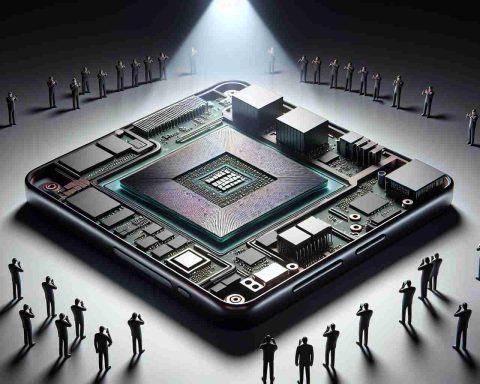In an exciting bid to redefine smartphone design, Apple and Samsung are trudging through a challenging yet promising journey to bring the ultra-slim iPhone 17 Slim and Galaxy S25 Slim to the market next year. Both tech giants have encountered significant hurdles, with each taking different approaches to overcome them.
One of the crucial challenges revolves around crafting incredibly thin motherboards. Apple has made notable strides in this area and successfully tackled the issue. Meanwhile, Samsung faces ongoing difficulties due to supply chain disruptions, causing delays in their mass production efforts.
Another pressing innovation challenge is the development of batteries that are not only exceptionally thin but also have sufficient capacity to ensure seamless device performance. Apple experimented with silicon anode batteries, which seemed promising initially. However, the high manufacturing volumes needed for these cutting-edge components forced Apple to revert to traditional battery technologies.
Interestingly, Samsung appears to have made progress in this area by exploring new materials, potentially allowing the Galaxy S25 Slim to feature high-density silicon anode batteries. This innovation could put Samsung at the forefront of battery design, promising enhanced performance in their upcoming devices.
Both smartphones are anticipated to debut in the latter half of next year. The iPhone 17 Slim is expected to sport a sleek 6mm thin body, setting a new standard for elegance after its predecessor, the iPhone 16 Plus. Likewise, the Galaxy S25 Slim, as the successor to the Galaxy S25 FE, is poised to revolutionize Samsung’s flagship lineup with other models potentially adopting this sleek design in the future.
Ultra-Thin Smartphones: Boon or Bane for Users and the Industry?
In recent years, the race to achieve ultra-thin smartphones has electrified the tech industry, with giants like Apple and Samsung leading the charge. While the path to creating devices like the upcoming iPhone 17 Slim and Galaxy S25 Slim is fraught with challenges, the implications for consumers, communities, and entire industries are monumental.
Why Does Ultra-Thin Matter?
Besides aesthetic appeal, ultra-thin designs promise improved portability and potentially new ways of interacting with technology. A slimmer design often means lighter devices, which can offer additional comfort for users amid increased mobile usage. However, this innovation raises several critical questions and issues.
Impact on Consumers and Communities
The pursuit of ultra-thin devices often brings cutting-edge technology to the forefront, pressuring manufacturers to innovate constantly. For consumers, this can mean access to advanced features that improve everyday life, from faster processing to stunning displays. On the downside, thinned down devices might compromise durability. Users may experience increased repair costs or shorter device lifespans, affecting both individual budgets and e-waste levels.
Industry Pressure and Controversies
The development of ultra-slim smartphones exerts significant pressure on supply chains. As seen with Samsung’s ongoing struggles, dependencies on specific components can lead to delays. This pressure reverberates through the industry, affecting everything from manufacturing jobs to global tech markets.
Moreover, the race for these innovations sometimes slips into controversial territory regarding sustainability. Both Apple and Samsung—as industry leaders—are often scrutinized for their environmental policies. The shift from experimental to traditional battery technologies by Apple highlights the balance between innovation and eco-conscious practices.
Advantages of Ultra-Thin Designs
The benefits of such innovation are undeniable. Ultra-thin smartphones pave the way for sleeker designs that appeal to consumer desires for luxury and elegance. Improved components, like potential high-density batteries from Samsung, suggest potential performance leaps that can offer consumers longer battery life and faster charging capabilities without bulkier devices.
Potential Drawbacks
Despite these advantages, several significant drawbacks accompany ultra-thin smartphone innovations. The durability of thinner devices is a common concern, as is the potential loss of features like headphone jacks or battery capacity. Moreover, higher production costs of these advanced technologies often translate to higher retail prices, becoming a barrier for widespread accessibility.
FAQs:
Are ultra-thin designs more fragile than traditional smartphones?
Generally, yes. The push for thinner devices can compromise structural integrity, making them more susceptible to damage from falls or pressure.
How do these innovations impact environmental sustainability?
While thinner designs can mean using fewer resources, high-tech components can be challenging to recycle. Balancing innovation with sustainable practices remains a significant industry issue.
For more information on smartphone trends and innovations, visit the global leader sites like Samsung and Apple for the latest updates.
In conclusion, while the quest for ultra-thin smartphones holds promise, it also brings substantial challenges and considerations that need to be addressed by manufacturers and consumers alike. Navigating this path requires a delicate balance between innovation, practicality, and sustainability.




























